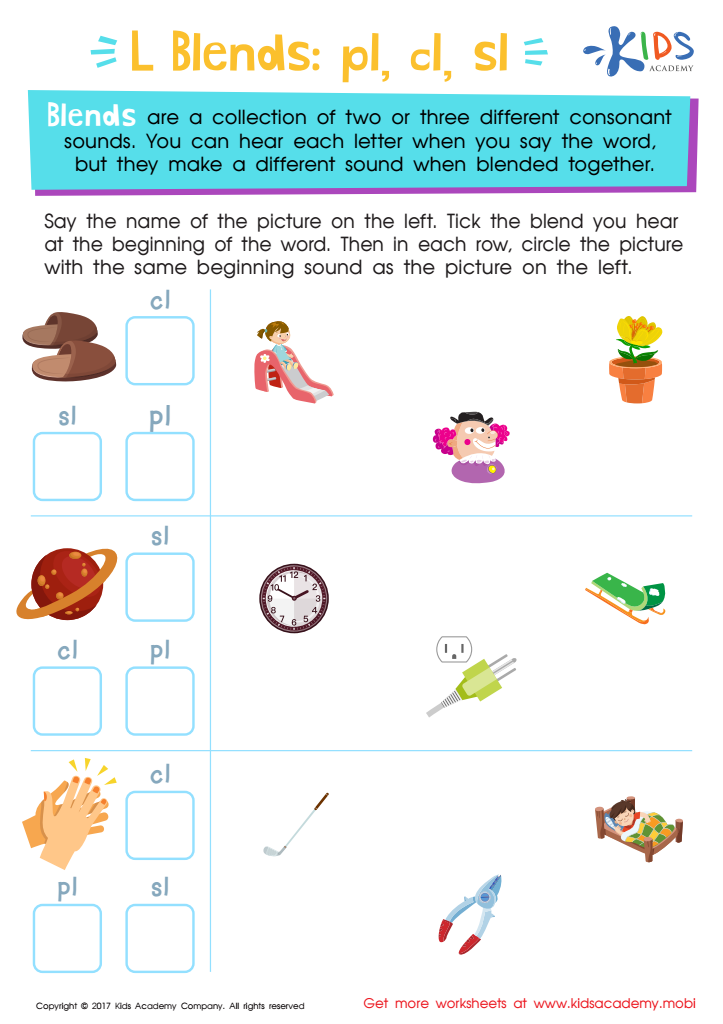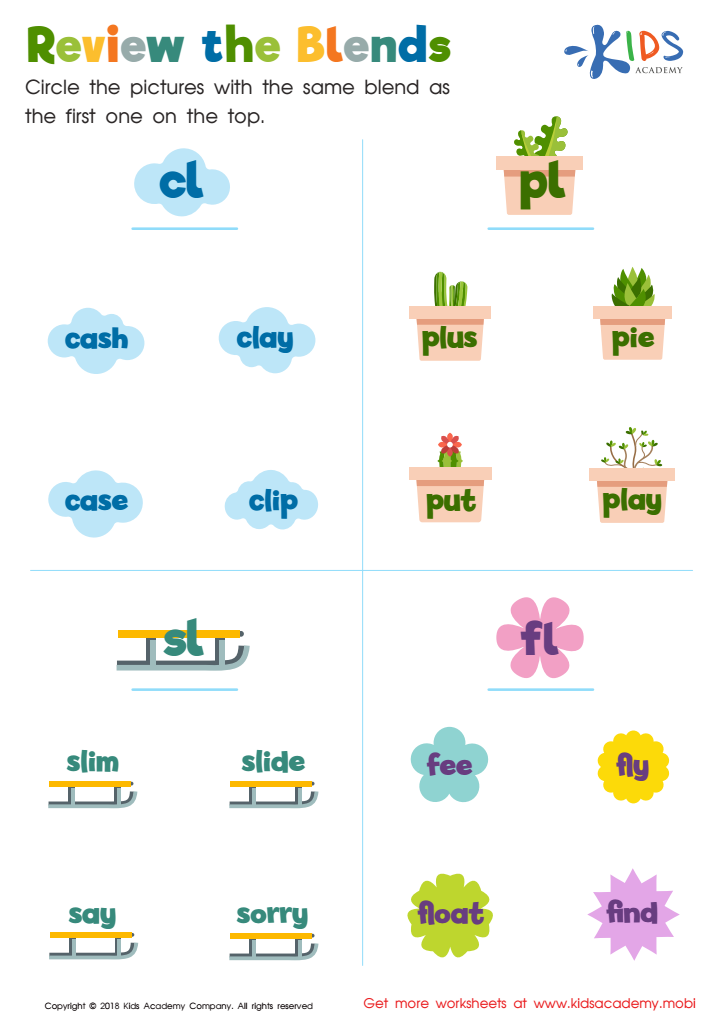Normal Initial and Final Consonant Blends Worksheets for Ages 3-7
4 filtered results
-
From - To
Welcome to our tailored "Normal Initial and Final Consonant Blends Worksheets" for ages 3-7! These engaging, interactive worksheets are designed to help young learners master blending sounds and enhance their phonemic awareness. Through fun exercises, children will practice recognizing and using initial and final consonant blends in various words. Our resources are perfect for both classroom settings and at-home learning, ensuring an enjoyable experience for kids as they develop essential reading skills. With vibrant illustrations and clear instructions, our worksheets foster a love for learning while building confidence in young readers. Start your child's journey to literacy today!


Blending Consonants: "Fl", "Bl" and "Gl" Printable


L Blends: "Pl", "Cl" and "Sl" Printable


Consonant Blends: "Dr" and "Tr" Printable


Review the Blends Worksheet
Parents and teachers should care about normal initial and final consonant blends for children ages 3-7 because these blends are foundational elements in early literacy development. Consonant blends consist of two or more consonants that appear together in a word without losing their individual sounds, such as "bl" in "blue" or "nd" in "sand." Understanding and mastering these blends greatly enhance a child's phonemic awareness, a crucial skill for reading and writing.
Starting with initial blends, children learn to decode words, which aids in their reading comprehension and vocabulary growth. The ability to identify final blends enhances their spelling skills and allows young learners to break down complex words, making reading less daunting and more engaging.
Moreover, blending sounds is linked to overall communication skills. As children learn to pronounce and recognize these sounds, they build their confidence in speaking and enhance their ability to express thoughts clearly. By focusing on consonant blends in fun and interactive ways, parents and teachers can foster a richer language environment, ultimately leading to greater academic success and a lifelong love of reading. For these reasons, promoting understanding of blends is critical for early childhood education.

 Assign to My Students
Assign to My Students
















